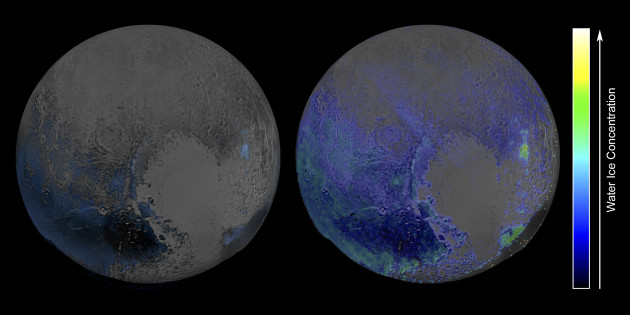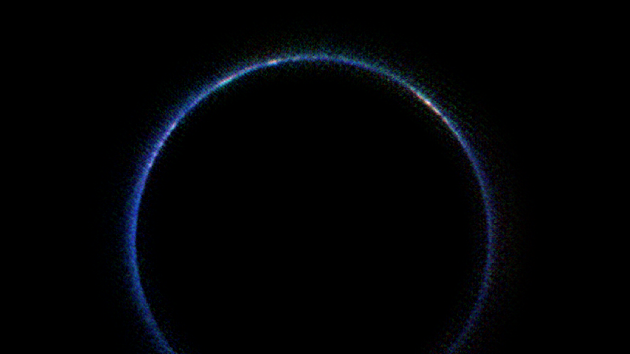A color-coded map from NASA’s New Horizons mission shows where Pluto’s frozen water is concentrated, just in case we need to fill up our tanks on the way to Alpha Centauri or Planet Nine.
Water ice turns out to be more widespread on the dwarf planet than previously thought, the mission’s researchers reported today. They came to that conclusion after some sophisticated analysis of infrared imagery captured during the New Horizons spacecraft’s flyby last July 14.
Soon after the flyby, the mission team concluded that Pluto possessed mountains of water ice rising as high as 11,000 feet above the icy world’s surface. That conclusion was confirmed in follow-up studies based on the infrared data from the piano-sized probe’s Ralph/LEISA instrument.
plutoScience journalist Alan Boyle is the author of “The Case for Pluto: How a Little Planet Made A Big Difference.”
LEISA’s survey mapped concentrations of water ice, but scientists figured out that the spectral readings could be thrown off if the frozen water was mixed in with frozen methane. When they modeled the contributions from other types of ice on Pluto’s surface, the resulting map showed wider stretches where water ice should be present.

There’s still no sign of water on the western side of Pluto’s heart-shaped region, known informally as Sputnik Planum, or in the north polar region known as Lowell Regio. “This indicates that at least in these regions, Pluto’s icy bedrock is well hidden beneath a thick blanket of other ices such as methane, nitrogen and carbon monoxide,” the New Horizons team wrote in today’s image advisory.
As would-be asteroid miners know, water ice could become a precious resource for future interplanetary travelers, because it can be turned into rocket fuel as well as oxygen for breathing and liquid water for drinking. But even if no one ever lands on Pluto, the water distribution map provides valuable information about the dwarf planet’s geology.
Backlit Pluto atmosphere in infrared
This infrared image from New Horizons shows how haze in Pluto’s thin atmosphere scatters sunlight. The imagery was captured after the spacecraft’s close encounter, at a distance of about 112,000 miles from Pluto. (Credit: NASA / JHUAPL / SwRI)
Another newly released picture from LEISA provides the first look at Pluto’s thin atmosphere in infrared wavelengths. The backlit view was captured just after the spacecraft’s close encounter, and looks similar to a visible-wavelength view that was released last October.
The blue ring is sunlight that’s apparently been scattered by hydrocarbon-based haze. There are a few white regions in the ring, where the sunlight is bouncing off more reflective or smoother areas on Pluto’s surface.
The New Horizons spacecraft is expected to continue sending data saved up from its encounter for at least several months, so you can look forward to many more snapshots from the edge of the solar system.
